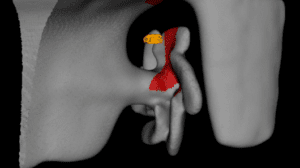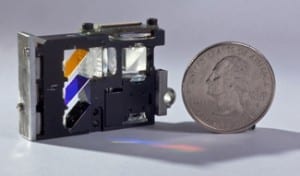Algorithms enable robot to navigate and view propellers and other complex structures.
For years, the U.S. Navy has employed human divers, equipped with sonar cameras, to search for underwater mines attached to ship hulls. The Navy has also trained dolphins and sea lions to search for bombs on and around vessels. While animals can cover a large area in a short amount of time, they are costly to train and care for, and don’t always perform as expected.
In the last few years, Navy scientists, along with research institutions around the world, have been engineering resilient robots for minesweeping and other risky underwater missions. The ultimate goal is to design completely autonomous robots that can navigate and map cloudy underwater environments — without any prior knowledge of those environments — and detect mines as small as an iPod.
Now Franz Hover, the Finmeccanica Career Development Assistant Professor in the Department of Mechanical Engineering, and graduate student Brendan Englot have designed algorithms that vastly improve such robots’ navigation and feature-detecting capabilities. Using the group’s algorithms, the robot is able to swim around a ship’s hull and view complex structures such as propellers and shafts. The goal is to achieve a resolution fine enough to detect a 10-centimeter mine attached to the side of a ship.
“A mine this small may not sink the vessel or cause loss of life, but if it bends the shaft, or damages the bearing, you still have a big problem,” Hover says. “The ability to ensure that the bottom of the boat doesn’t have a mine attached to it is really critical to vessel security today.”
Hover and his colleagues have detailed their approach in a paper to appear in the International Journal of Robotics Research.
via MIT
The Latest Streaming News: Autonomous robot updated minute-by-minute










